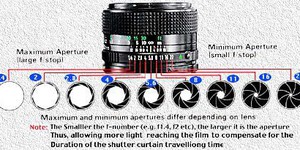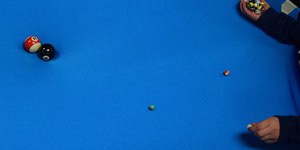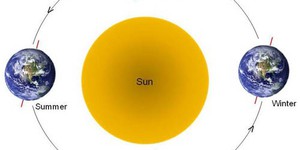Others Like “Measuring the Diameter of the Sun and the Moon” (top 20 results)
|
Make a pinhole projector (see Measuring the Diameter of the Sun and the Moon). Use the pinhole to project an image of the Sun onto a wall or a piece of paper. Do you notice any dark spots on the projected image? Trace the projected image and count the dark spots. Use your pinhole projector to make images of the Sun at the same time of day for several consecutive days. How does the pattern of spots change? Can you use your data to figure out how fast the Sun rotates? Sunspot activity rises…
Read more
Pinhole cameras are not just for grannies! Even compared to all of the latest technology, a pinhole camera still gets beautiful results. Find out how this very simple aperture design works to control the way light enters the lens of your camera.
Read more
Some claim the Moon appears larger when near the horizon. Make a series of observations of the Moon, measuring the Moon's angular diameter each time. You should also note the Moon's altitude above the horizon, and the Moon's phase. You should do background research on the lunar orbit to determine the necessary time period. Do you find predictable variations in the Moon's diameter? Can you relate this to the Moon's changing distance from Earth? From your data, try to determine when apogee and…
Read more
Let's suppose you can take advantage of the Internet and get a 'pen pal' located a 1000 miles away in another city. On the same night, and at EXACTLY the same time 'Universal Time', make a CAREFUL observation of where the Moon is located with respect to the background stars. You should be able to discern a slight (about 1/2 the Moon's diameter) shift in position due to parallax. Then, with a little geometry, you could estimate the distance of the Moon during the full lunar cycle (Odenwald,…
Read more
Here's a cool project that shows you how to use images from an orbiting observatory to measure how fast the Sun rotates.
Read more
Here's an astronomy project idea from Dr. James Pierce, a professor in the Astronomy Program at Minnesota State University, Mankato: "Determine the length of twilight at different times of the year by observing the time at which certain bright stars first appear and comparing with the sunset time. Beware of variations due to stars appearing at different altitudes. Try using Polaris as a standard. Also note the time at which automatic streetlights turn on. Determine how soon after sunset stars…
Read more
Why do the planets orbit the sun without flying off into space? Do they move in perfect circles or do their orbits take a different shape? And how could you possibly do a science project about any of this—you can't do an experiment with the planets! However, you can build a model of our solar system that demonstrates the concept of gravity, using balls of different sizes to represent the sun and planets. Watch this video for an excellent introduction to the model:
Think…
Read more
Do you live someplace where you get to experience the full glory of all four seasons? If so, you know well the heady blossoms and dramatic skies of spring; the long, sun-drenched days of summer; the trees shaking in crimson and gold in fall; and the sparkling, brittle snows of winter. But you might not know why we have these seasons, over and over again, in a cycle as predictable as the rising and setting of the Sun. The reasons for the seasons are surprising and have to do with Earth's tilt…
Read more
Get good photographs of the Moon showing lots of craters and count how many craters you find in a range of diameter classes. One useful source is the Consolidated Lunar Atlas (Kuiper et al, 2006). Make a histogram that shows the distribution of diameters. Most of these craters were formed during the first billion years of the Moon's formation, but you should confirm that this is true for the the Moon areas you've selected in your photographs by doing background research. Is cratering uniform…
Read more
Use your Internet sleuthing skills to learn about solar system objects. Create a table of measurements of moons and asteroids in order to determine if there is a size threshold for roundness. A good source of information would be an online guide such as The Nine Planets (Arnett, W.A., 2006). You'll find information about planetary satellites, including dimensions and accompanying pictures. From the pictures, classify the satellites and asteroids according to how round they are. Can you think of…
Read more
|
Explore Our Science Videos
Two-Stage Balloon Rocket Introduction
Ball Launcher: 2018 Engineering Challenge
Build a Solar-Powered Car for the Junior Solar Sprint








